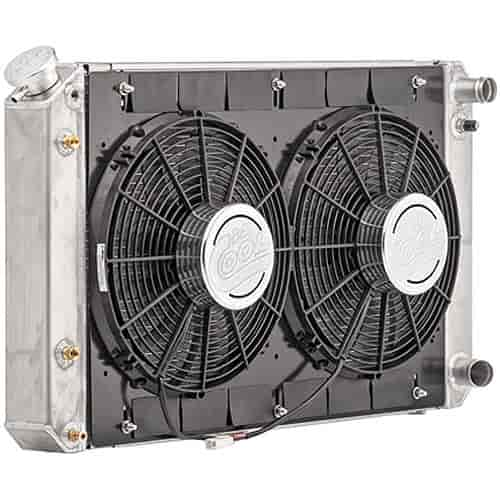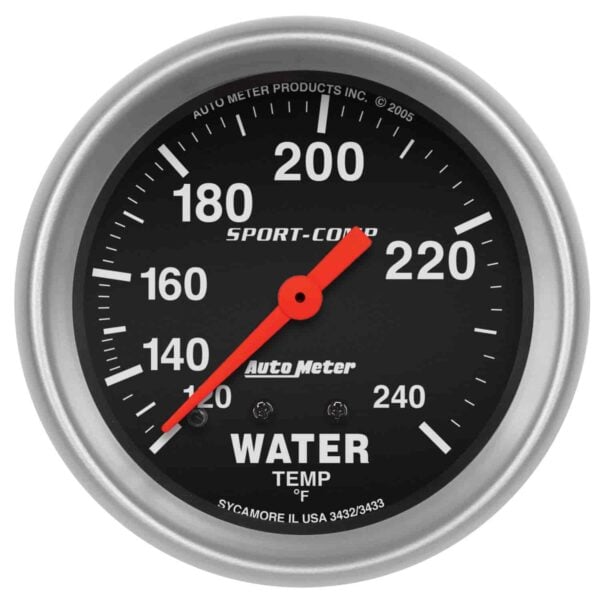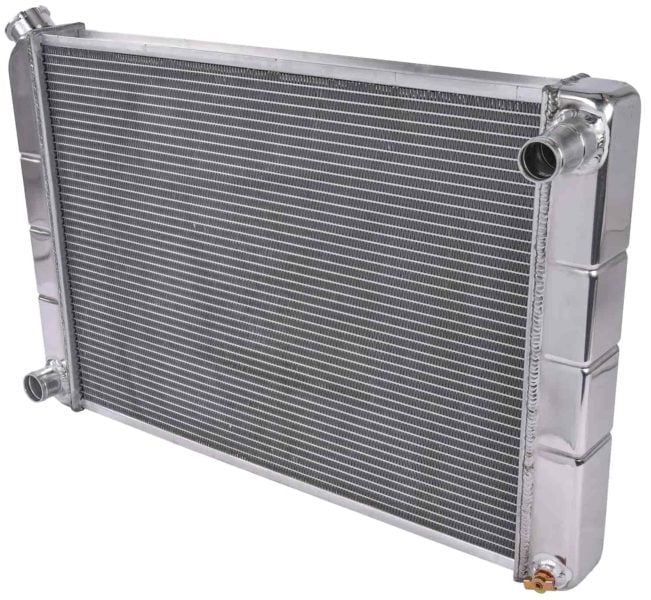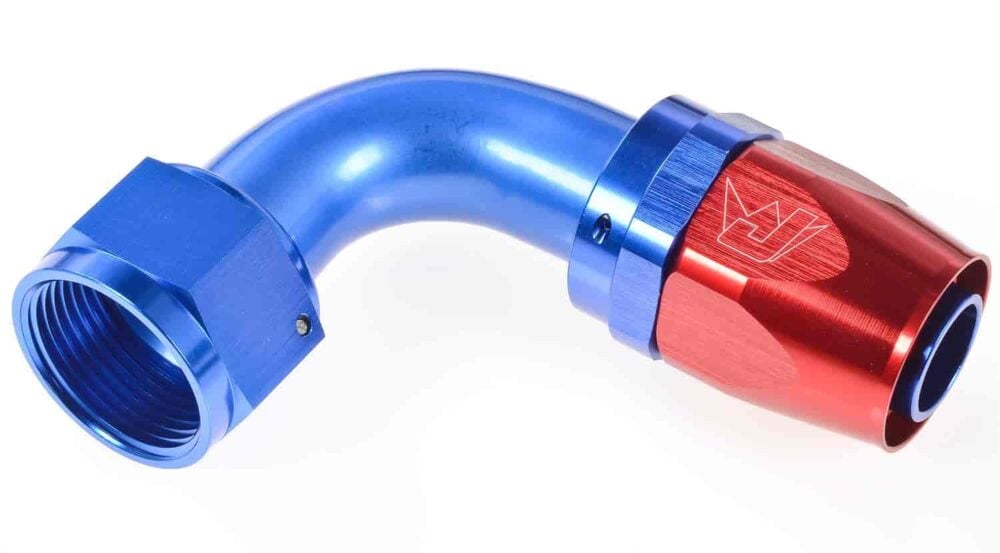
A radiator is probably one of the most underestimated part of a car. People usually don’t think much about them when they’re working, however, the radiator plays an essential role in keeping the engine operating at the right temperature. Only by doing so can the car maintain its performance, fuel economy, and lifespan.
For racing purposes, or if you’re upgrading your car’s power output, performance radiators are an essential upgrade. Stock radiators are meant to control the engine temperature based on specific calculations made by the manufacturer, and every performance upgrade that increases the power is a potential threat to the engine.
In this article, we’ll cover the basics of a performance radiator, the available types, their cost, and lastly, how to find an aftermarket radiator for your car online.
Types of Performance Radiators
Radiators have been used for over a century, however, their goal has always remained the same – maintaining an optimum temperature for the engine. Before the 1970s, brass and copper radiators were used. Brass and copper radiators were replaced by radiators with an aluminum core and plastic tanks. To this day, the plastic-aluminum combination is the most common design in production cars. This is due to cost-savings as well as aluminum's ability to cool more efficiently than brass and copper.
While stock radiators are usually made from an aluminum core and plastic tanks, a performance engine radiator is usually made entirely from aluminum.
Aside from the difference in materials used in production, an engine radiator can be divided into two categories - crossflow and downflow radiators.

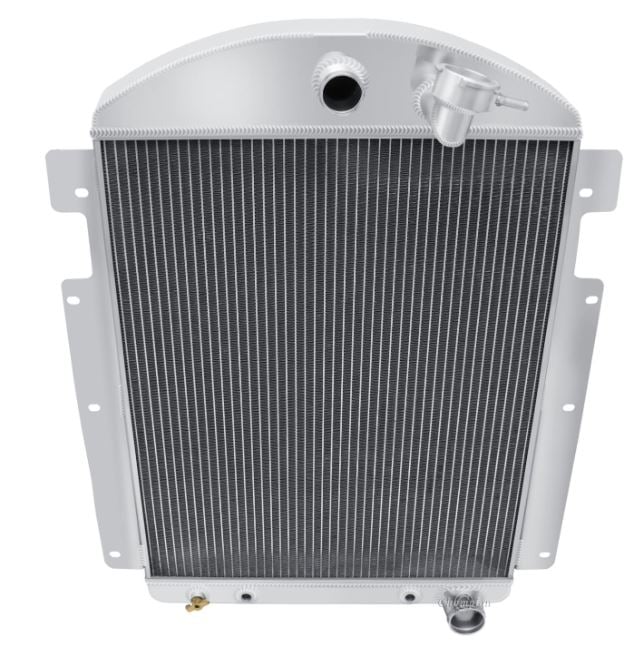
Crossflow radiators have two vertical tanks on the sides, compared to downflow radiators that have a tank only at the top. In a crossflow aftermarket radiator, the coolant travels from one side to another with help from the water pump, while the coolant in the downflow radiators travels from the top to the bottom. When it comes to cooling ability, crossflow radiators are a much better choice because it takes more time for the coolant to travel through this radiator and they typically have more surface area, thus more efficiently cooling the engine.
In addition to the cooling abilities, crossflow radiators look more aesthetically pleasing through the front grille or under the hood on any car or truck due to their construction - they’re much wider and shorter compared to downflow radiators.
Radiator Core Row Quantity And Size
Radiators are also available with a different number of rows of tubes that the coolant passes through, which affects cooling surface area. Factory radiators (typically made of copper, brass, aluminum, and on late models, plastic tanks) will usually have two to three rows in the core. On vehicles where air conditioning is optional, radiators with more rows are usually installed on air conditioning-equipped cars and trucks.
The diameter of the rows on a factory / OE radiator is typically under one inch. Most aftermarket radiator cores are constructed from aluminum and have two rows. However the diameter of the tubes in performance radiators is typically 1" to 1.5", making them more efficient than most 4-row factory-style copper/brass radiators with smaller tubes. This makes the number of rows and their diameter factors in how well a radiator will cool an engine.
How Much Do Performance Radiators Cost?
A performance aftermarket radiator can come in different shapes and sizes. Even stock radiators for high-performance engines can be larger than a performance radiator for a smaller-sized engine, so talking about cost can be quite tricky.
Stock radiators can be usually found for $150 and up, while performance radiators cost between $250 and $500, depending on the manufacturer.
Another factor that can make a difference in price is whether you’re looking for a radiator only, or a complete kit that includes tubing, electric fans, and brackets aside from the performance radiator.
When it comes to aftermarket performance radiators, JEGS is one of the trusted suppliers where you can find performance radiator manufacturers such as Be Cool, Griffin, Champion, JEGS, DeWitts, Mishimoto, and others.
Common Questions About Radiator Upgrades
One of the first questions about engine radiator upgrades is whether they’re worth it or not. When it comes to completely stock engines without any upgrades, a performance radiator may not make any difference. In tuned and high-performance engines, an engine radiator upgrade might be beneficial.
Another common question about radiator upgrades is whether all-aluminum radiators are better than aluminum-plastic ones. The answer is yes. An all-aluminum performance radiator can use the entire surface for cooling the fluid because even the aluminum tanks dissipate heat. In addition, plastic tanks can degrade, crack, and leak over time, where aluminum will last longer.
When it comes to performance radiators, size does matter. The larger the surface, the more cooling capability the radiator has. This is why race cars have massive radiators that keep optimal engine temperature. Of course, other cooling components play a significant role when it comes to high-performance vehicles. This is also the reason why you can find performance radiator kits at JEGS - kits that contain everything from clamps, tubes, and an engine radiator.
The question most people ask is whether or not the car needs to be modified to fit the aftermarket radiator. The truth is, if you’re installing a larger engine radiator than the stock one, you’ll likely need to perform a few modifications and add brackets to hold the new radiator in place. If you, however, replace the stock radiator with the same-sized aftermarket one, there’s a good chance you won’t need to modify anything, but it all depends on the manufacturer of the performance radiator.
Finding The Best Radiator Online
Before you start searching for a performance radiator online, you should know exactly what kind of radiator or kit you need.
The first thing to be aware of is whether or not you need a performance radiator in your car. Engines with stock power and without modifications don’t require performance radiators because the factory radiator is designed to keep the factory engine cool and is adequate (but it doesn't hurt to upgrade the radiator if you want to). However, if your engine is modified and produces more power than stock, an aftermarket radiator will be a great choice. For this, you’ll need to know what the power output is.
Next thing, you’ll need to measure the room for the new engine radiator. For buying a stock radiator, it would be enough to know the year, make, model, and engine size of your car, but if you need a larger radiator, you’ll need to know how much space you have to fit the new one. Don't forget to check your water pump, thermostat, and radiator cap condition while completing a performance radiator installation. Confirm you have the correct PSI cap, thermostat temperature, and a water pump up to the task of moving coolant between a performance engine and radiator.
Aside from knowing the technical aspects, you’ll also need to find a trustworthy supplier of performance radiators such as JEGS that has a wide enough selection so you’ll have more than one choice when selecting your new radiator. We’ve already mentioned the brands available at JEGS, and the great thing is that JEGS also includes other car parts and components such as brake components, engine parts, oils, filters, wheels, tires, as well as tools and safety gear.
